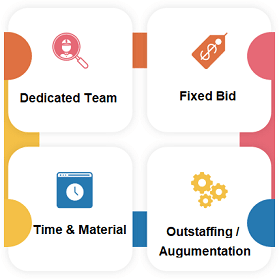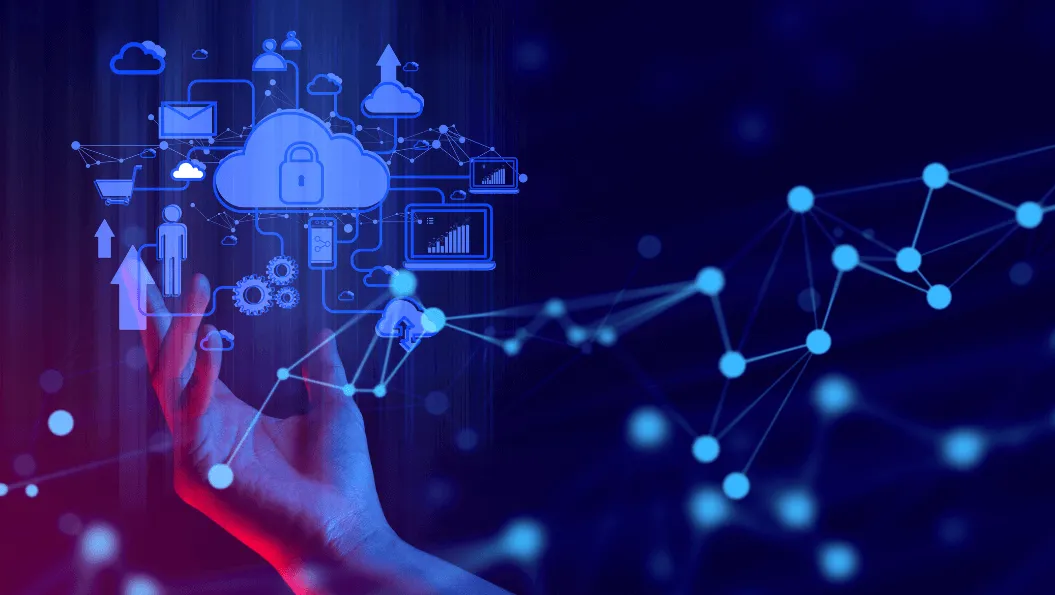
Unlocking the Potential of the Internet of Things (IoT)
There’s a lot of noise at the moment about the Internet of Things (or IoT) and its impact on everything from the way we travel and do our shopping to the way manufacturers keep track of inventory. But what is the Internet of Things? How does it work? And is it that important?
What is the Internet of Things?
The Internet of Things, or IoT, refers to the billions of physical devices around the world that are now connected to the internet, all collecting and sharing data. Thanks to the arrival of super-cheap computer chips and the ubiquity of wireless networks, it's possible to turn anything, from something as small as a pill to something as big as an airplane, into a part of the IoT. Connecting all these different objects and adding sensors to them adds a level of digital intelligence to devices that would be otherwise dumb, enabling them to communicate real-time data without involving a human being. The Internet of Things is making the fabric of the world around us smarter and more responsive, merging the digital and physical universes.
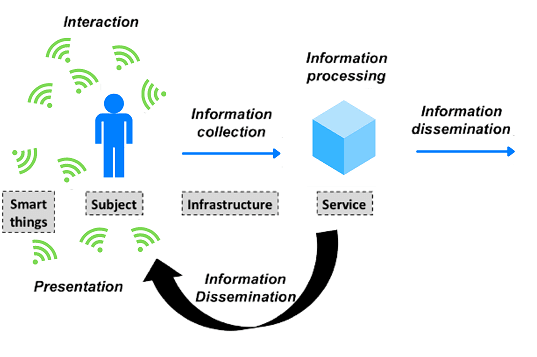
Understanding Industrial IoT: Transforming Industries with Smart Tech
The Industrial Internet of Things (IIoT) or the fourth industrial revolution or Industry 4.0 is all names given to the use of IoT technology in a business setting. The concept is the same as for the consumer IoT devices in the home, but in this case, the aim is to use a combination of sensors, wireless networks, big data, AI, and analytics to measure and optimize industrial processes.
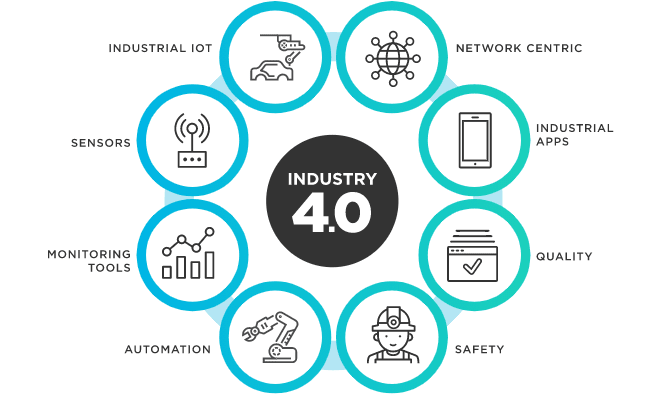
If introduced across an entire supply chain, rather than just individual companies, the impact could be even greater with just-in-time delivery of materials and the management of production from start to finish. Increasing workforce productivity or cost savings are two potential aims, but the IIoT can also create new revenue streams for businesses; rather than just selling a standalone product – for example, like an engine – manufacturers can also sell predictive maintenance of the engine.
Building Blocks of IoT
Four things from the basic building blocks of the IoT system – sensors, processors, gateways, applications. Each of these nodes has to have its characteristics to form a useful IoT system.
Sensors:
- These form the front end of the IoT devices. These are the so-called “Things” of the system. Their main purpose is to collect data from its surroundings (sensors) or give out data to its surrounding (actuators).
- These have to be uniquely identifiable devices with a unique IP address so that they can be easily identifiable over a large network.
- These have to be active in nature which means that they should be able to collect real-time data. These can either work on their own (autonomous) or can be made to work by the user depending on their needs (user-controlled).
- Examples of sensors are gas sensors, water quality sensors, moisture sensors, etc.
Processors:
- Processors are the brain of the IoT system. Their main function is to process the data captured by the sensors and extract valuable data from the enormous amount of raw data collected. In a word, we can say that it gives intelligence to the data.
- Processors mostly work on a real-time basis and can be easily controlled by applications. These are also responsible for securing the data – that is performing encryption and decryption of data
- Embedded hardware devices, microcontrollers, etc are the ones that process the data because they have processors attached to it.
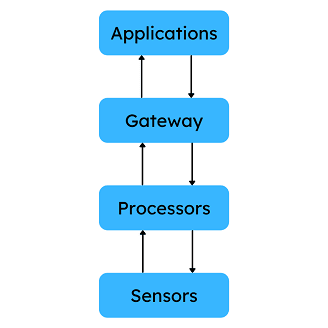
Gateways:
- Gateways are responsible for routing the processed data and send it to proper locations for its proper utilization.
- In other words, we can say that gateway helps in to and fro communication of the data. It provides network connectivity to the data. Network connectivity is essential for any IoT system to communicate.
- LAN, WAN, PAN, etc are examples of network gateways.
Applications:
- Applications form another end of an IoT system. Applications are essential for the proper utilization of all the data collected.
- These cloud-based applications are responsible for rendering effective meaning to the data collected. Applications are controlled by users and are a delivery point of particular services.
- Examples of applications are home automation apps, security systems, industrial control hubs, etc
Benefits Of The IOT
For Businesses:
The benefits of the IoT for business depend on the specific implementation; agility and efficiency are usually top considerations. The idea is that enterprises should have access to more data about their products and their internal systems, and a greater ability to make changes as a result.
For Consumers:
The IoT promises to make our environment, our homes and offices and vehicles, smarter, more measurable, and chattier. Smart speakers like Amazon's Echo and Google Home make it easier to play music, set timers or get information. Home security systems make it easier to monitor what's going on inside and outside or to see and talk to visitors. Meanwhile, smart thermostats can help us heat our homes before we arrive back, and smart lightbulbs can make it look like we're home even when we're out.
Looking beyond the home, sensors can help us to understand how noisy or polluted our environment might be. Self-driving cars and smart cities could change how we build and manage our public spaces.
Importance of IoT
Over the past few years, IoT has become one of the most important technologies of the 21st century. Now that we can connect everyday objects—kitchen appliances, cars, thermostats, baby monitors—to the internet via embedded devices, seamless communication is possible between people, processes, and things.
Insights from a 2021 IoT forecast revealed that worldwide spending might have already exceeded $1 trillion in 2021 alone. It is predicted that IoT spending will maintain a double-digit annual growth rate throughout the 2021-2022 forecast period. The report also looks at IoT use cases and says that manufacturing operations, production management, and smart homes will be the leading industry spenders in 2020. Consumer IoT spending will reach $945 billion in 2021.
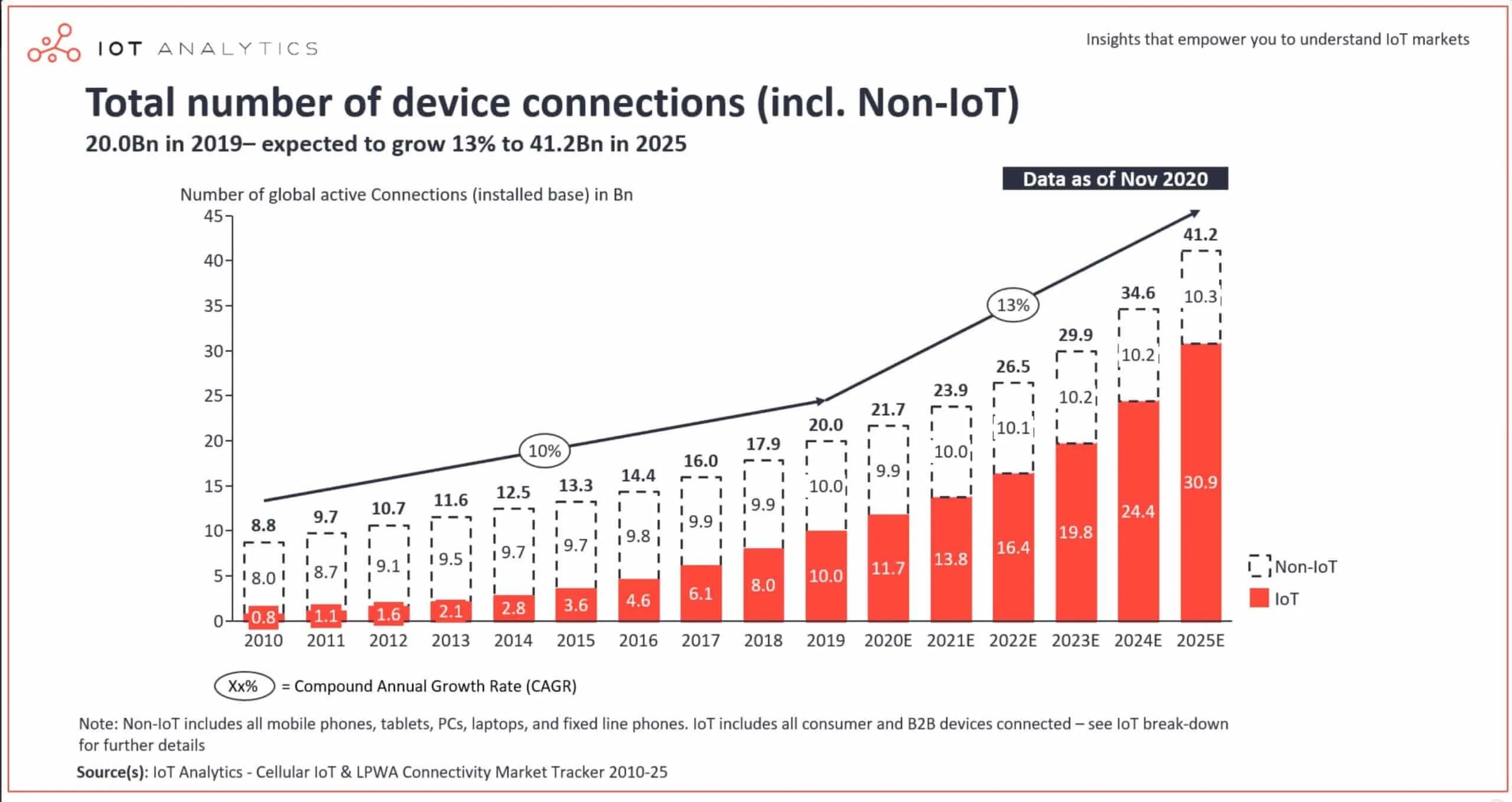
Companies are beginning to see IoT devices’ potential, and this stat does not come as a surprise. According to Gigabit, companies could invest up to $15 trillion in IoT by 2025 and add value to their businesses. IoT statistics show that several healthcare providers, manufacturers, and municipalities have already chosen to invest in IoT technology.
Although it’s too early to expect fully driverless cars, the technology behind fully autonomous driverless vehicles is still undergoing rigorous trials and development. Statista predicts that we will see a jump in partially automated vehicles by 2025 when the market will reach $36 billion. Eventually, by 2035 North America will hold 29% of the self-driving fleet, followed by China with 24% and Western Europe with 20%.
What Technologies Have Made IoT Possible?
While the idea of IoT has been in existence for a long time, a collection of recent advances in several different technologies has made it practical.
Access to low-cost, low-power sensor technology - Affordable and reliable sensors are making IoT technology possible for more manufacturers.
Connectivity - A host of network protocols for the internet has made it easy to connect sensors to the cloud and other “things” for efficient data transfer.
Cloud computing platforms - The increase in the availability of cloud platforms enables both businesses and consumers to access the infrastructure they need to scale up without having to manage it all.
Machine learning and analytics - With advances in machine learning and analytics, along with access to varied and vast amounts of data stored in the cloud, businesses can gather insights faster and more easily. The emergence of these allied technologies continues to push the boundaries of IoT and the data produced by IoT also feeds these technologies.
Conversational artificial intelligence (AI) - Advances in neural networks have brought natural-language processing (NLP) to IoT devices (such as digital personal assistants Alexa, Cortana, and Siri) and made them appealing, affordable, and viable for home use.
Applications of IoT
IoT Intelligent Applications are prebuilt software-as-a-service (SaaS) applications that can analyze and present captured IoT sensor data to business users via dashboards. Oracle has a full set of IoT Intelligent Applications
IoT applications use machine learning algorithms to analyze massive amounts of connected sensor data in the cloud. Using real-time IoT dashboards and alerts, you gain visibility into key performance indicators, statistics for mean time between failures, and other information. Machine learning-based algorithms can identify equipment anomalies and send alerts to users and even trigger automated fixes or proactive countermeasures.
With cloud-based IoT applications, business users can quickly enhance existing processes for supply chains, customer service, human resources, and financial services. There’s no need to recreate entire business processes.
Real-World IoT Examples:
1. IoT Sensors
IoT sensors consist of manual or digital sensors connected to circuit boards such as Arduino Uno or Raspberry Pi 2. The circuit boards can be programmed to measure a range of data collected from a sensor device such as carbon monoxide, temperature, humidity, pressure, vibration, and motion.
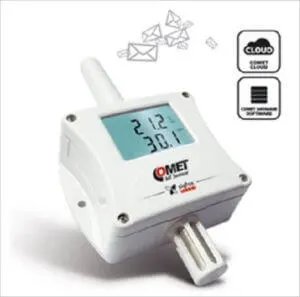
What differentiates IoT sensors from simple sensors is that they can not only gather data in different physical environments but also send data to connected devices.
The IoT sensors allow seamless control of data through automation delivering actionable insights. They can be used by businesses for predictive maintenance, enhanced efficiency, and reduced costs.
2. Smart Bar Code Readers
IoT barcode readers can help in better inventory management for retailers. The readers support AI-based digital signal processing. These devices can optimize the operations of many sectors including retail, logistics, warehouse, and much more.
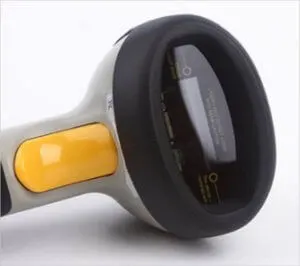
IoT-based bar card readers feature cloud data connections to connect with other systems. Using the connected bar code reader will ease the process of managing inventory.
IoT barcode readers can be incorporated into shopping carts. The readers use AI-based sensors to detect products as they are dropped or removed from the cart. The reader can transfer data to the computer automatically, and that can save a lot of time in checkout resulting in an improved experience for the customers.
3. IoT Data Analytics
Businesses are increasingly using IoT data analytics to determine trends and patterns by analyzing big and small data. IoT data analytics apps can analyze structured, unstructured, and semi-structured data to extract meaningful insights.
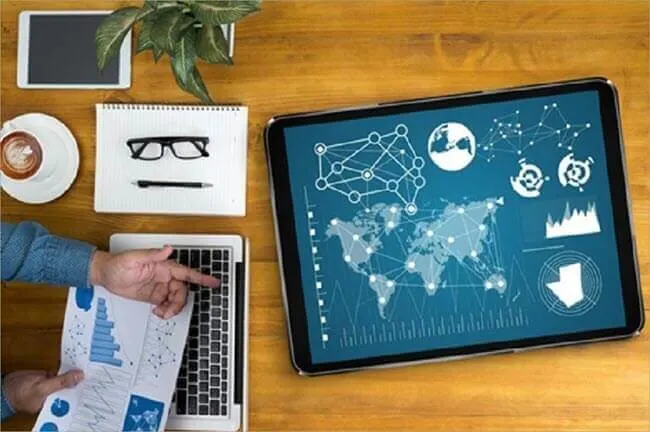
IoT can be applied to data analytics to investigate different types of data including motion data sets, geographical data, and health care data. It can be used by businesses for predictive and descriptive analysis to improve customer knowledge, enhance operational efficiency, and create business value.
IOT evolution: Where does the Internet of Things go next?
As the price of sensors and communications continues to drop, it becomes cost-effective to add more devices to the IoT – even if in some cases there's a little obvious benefit to consumers. Deployments are at an early stage; most companies that are engaging with the IoT are at the trial stage right now, largely because the necessary technology – sensor technology, 5G, and machine-learning powered analytics – are still at a reasonably early stage of development. There are many competing platforms and standards and many different vendors, from device makers to software development companies to network operators, want a slice of the pie. It's still not clear which of those will win out.
As the number of connected devices continues to rise, our living and working environments will become filled with smart products – assuming we are willing to accept the security and privacy trade-offs. Some will welcome the new era of smart things. Others will pine for the days when a chair was simply a chair.
Read more blogs here
